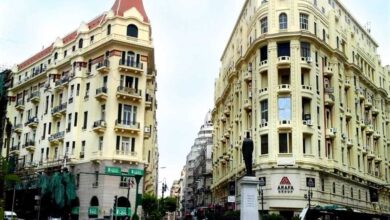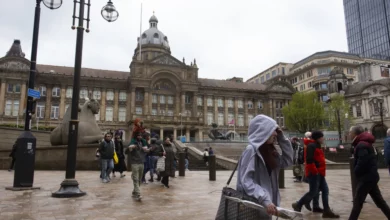In a country where freedom of expression is more of a myth than a birthright, the simplest social gathering can often serve as a form of protest. Rallies, demonstrations, and other traditional forms of public dissent have always been hazardous at best, and recent comments made by parliamentary officials recommending the use of firepower against protesters promise to add a new dimension to the tension brewing between the two sides. Even modern social networking technologies can’t completely escape the government’s watchful eye, with bloggers suffering routine arrests and house raids.
While internet activity is monitored, phone lines tapped, and protesters potentially shot at, one fact remains unchanged after decades of demoralization: Egyptians love to smoke shisha. Between the burdens of work and family, many Egyptians seek their solace in an qahwa, or local coffee shop, where they can gather with friends, smoke shisha and drink tea, challenge each other to a game of backgammon, and–most importantly–talk.
As witnesses to (and oftentimes victims of) a history of oppression, the coffee shops of Wust el-Balad (Downtown) have become more than the basic tea-and-shisha establishments which they may initially seem to be, evolving into sanctuaries for personal expression, artistic freedom, and the exchange of ideas. And so they have been perceived and represented since the Ottoman era.
Today, the streets of downtown may be lined with coffee shops, but the differences between them, subtle as they may seem, are telling, and play a significant role in the kind of customers they attract. While young couples and a good chunk of the remaining AUC crowd may be sipping their raspberry lattes at establishments such as Cilantro, Costa and Beano’s, there remains a wide spectrum of demographics that prefer a slightly less artificial atmosphere.
“This place is Egypt,” says Hany, an elderly “shisha-boy” at Zahret el-Bostan, a downtown qahwa more than 80 years old. Sprawling along the length of a narrow alleyway, Zahret el-Bostan is one of the area’s oldest and most well known establishments, a fact Hany repeatedly points out. “There’s the ‘Postcard Egypt,’ which is all pyramids and temples and the Nile. And then there’s the real Egypt, which is right here,” he says, gesturing down the alley.
“Everything that happens in this country, happens here first, on a smaller scale,” Hany claims.
Here refers to a place that witnessed heated debates between intellectuals, as represented in many works of literature, and was eventually labeled “the natural extension of Cafe Riche,” a 100-year-old adjacent coffeehouse and regular home to the literati of Cairo’s 1960s. Zahret el-Bustan is supposedly also the first coffeehouse to host a mourning ceremony for the deceased young novelist Ibrahim Fahmy.
Regulars at Zahret el-Bostan depend on the place for more than a nightly shisha and warm beverage, according to Hany. “They come here to talk and vent. After a day’s work, they come here to sit with friends, to discuss the news, their problems, the government, the country,” he explains. “That kind of talk was important in the past, and is still important today.”
Piling the coals onto Al-Masry Al-Youm’s shisha, Hany insists that even the “real” foreigners–the ones who live here, as opposed to the tourists–come here because they know it’s where they can find the “true Egyptian spirit.”
“They get enough of the trendy places anywhere else in the world,” he explains. “In places like this, they can experience something else.”
Despite Hany’s insistence, though, places like Zahret el-Bostan can also attract presumably non-real foreigners, or tourists, as evidenced by the late-night appearance of a lonely, limping Englishman, who hovers hesitantly over an unoccupied table, before taking a seat and promptly hiding behind his glossy new travel guide.
“I’ve only been in Cairo for a day,” says Christopher Warren. “I was walking around when I came across this place. I thought it looked interesting, so I came in.”
In Souk el-Hamedeya, on the corner of Bustan and Falaki, young artist Yousef, struggling to find success as a singer, shares a table with two older women wrapped in layers of black, exchanging tragedies over twin bottles of pineapple soda. A few tables down, an older man with his hair pulled back in a tight, cactus-like bun, strums his shisha pipe and hums to an audience of cats circling his bare feet. Despite the grating of the overhead fans and the car-horns and insults hurled in by the traffic jam directly outside, Souk el- Hamedeya has a stubbornly relaxed atmosphere. A long-out-of-date calendar hangs crookedly on a cracked, smoke-bruised wall, and the static mumblings of an ancient radio drift across the tiny space. The pace is slow and the service limited, but the history is undeniably rich, as a much-recommended talk with any of the easy-going patrons will immediately reveal.
The case is the same with el-Nadwa el-Thaqafeya, or the Intellectual Meeting Point, located directly down the street. Like that of its contemporaries, the tables and chairs at el-Nadwa are all wobbly to the extent that they may induce motion sickness. However, their decaying state is somewhat understandable, given that they’ve been bearing several decades’ weight of a population’s concerns and frustrations.
“Newer places just tend to feel more…” Yasmin Elbaramawy pauses to find the right word before settling on “superficial.” “Here, you regularly find people over 60 mingling with younger customers. Meeting people here is easier than in most other places–you don’t get as suspicious if someone approaches you and starts a conversation.”
The 27-year-old oud player–who regularly performs as part of Naseer Shamma’s orchestra–explains that for her, a major appeal of such coffeehouses lies in the regulars. As its name suggests, el-Nadwa el-Thaqafeya, along with a handful of other downtown establishments, is regarded as a hub for established and aspiring artists and free-thinkers.
“I can come here without having any kind of prior arrangements, and still meet a group of artists or friends,” she says. “Of course, there’s still some of the pretentiousness here that comes with the claim of ‘intellectualism,’ but it’s a lot less than you endure in most of the newer places.”
Elbaramawy also points out another appeal of the older downtown establishments–an opinion echoed by several young women throughout the night. “As a girl, it’s nice to go somewhere where people won’t gawk at you for openly having a cigarette or smoking shisha,” she says. “People here don’t hassle you about things like that.”
“Anyone can come here,” says 29-year-old American bassist Miles Jay, who used to live a few stories above el-Nadwa before moving to Beirut a few years ago. “People gather here regardless of social class, beliefs, or nationality. It’s not exclusive and the result is you can always find interesting conversations, creative people, and alternative culture.”
Having experienced life in the Middle East, Jay is well aware of the significance of public spaces. “It’s critical,” he says. “I don’t see how life could blossom without having a place where people can speak freely, where they won’t be attacked or turned away for their economic background, or opinions.”
In the distance, a crowd cheers. There is a football match going on, an important one apparently, but you wouldn’t know it sitting in your wobbly chair on el-Nadwa’s slanted sidewalk.
“There’s no backgammon here, or loud music. There’s no television,” Jay smiles. “This place was made for conversation.”




